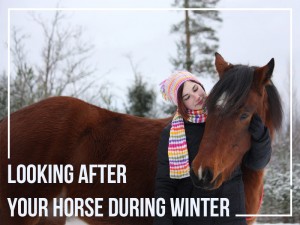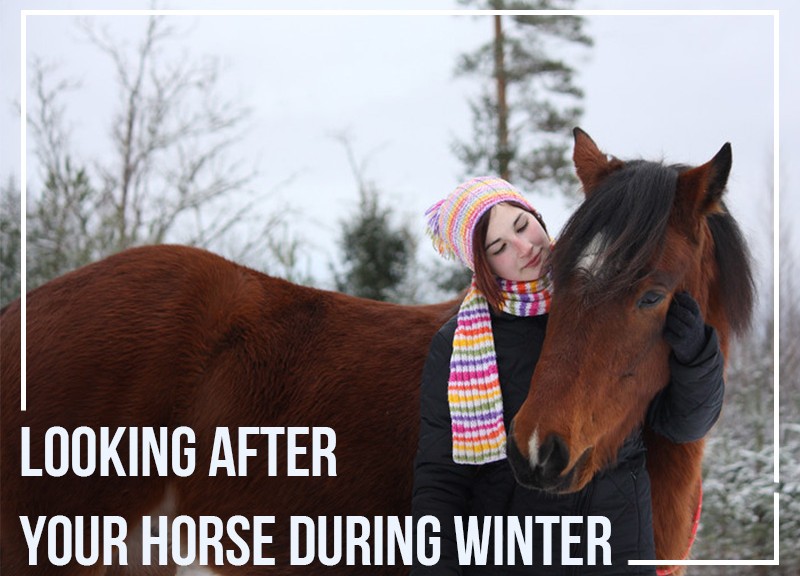
Winter can be difficult for horses especially if they are kept outside all year round but they will cope better if their owners provide them with extra care and attention.
A safe and stable field shelter is a great option for horses kept outside to have somewhere to go when the weather gets worse. It is very important to keep it clean, dry and with an area of clean bedding.
If possible try to keep an adequate working routine as it is very important for your horse’s health and wellbeing. Working horses and horses that are turned out will not have as much to eat outside and will need more food so don’t forget to always adjust feeding accordingly. It is always a good idea to keep an eye on your horse’s body condition score. To put it in a simple way, in a horse with a normal body condition score you should be able to feel the horse’s ribs when applying a light pressure with your hand on their ribcage.
If you can feel your horse’s ribs easily the horse is underweight and if you need to press a little harder to feel the horse’s ribs, your horse is probably overweight. Thin horses will be more susceptible to the cold and will lose weight in order to keep their body temperature.
Check on your horse twice a day and if possible, visit your horse early in the morning as this means you’ll have daylight if anything needs to be sorted out. Make sure there is always clean and unfrozen water available for your horse. Studies have shown that horses will drink a lot more if the water is slightly warm so please do not hesitate to add some warm water to your horse’s water buckets just to take the chill off. An adequate water intake is very important to keep their intestine working properly and to prevent colic.
Depending on your horse’s age, breed, on how much work your horse is doing and how sheltered your fields are, a rug may be recommended. Owners should remove their horse’s rug once a day to check underneath and make sure everything is looking normal.
It is also recommended to keep an eye on any signs of mud fever. Mud fever is common during this time of the year. If a horse stays wet and muddy for too long it could damage their skin, leading to the appearance of cracks and scabs usually on their lower limbs. This skin condition can lead to an active bacterial infection.
The best way to prevent mud fever is to clean the mud and dirt from your horse’s legs using tepid water and towel-drying them afterwards.
Our last recommendation is to make arrangements with someone you trust and has some experience to take care of your horse if you are delayed or if you cannot be there for some reason.
Would you like to know more about horses? Check our Equine Courses:
